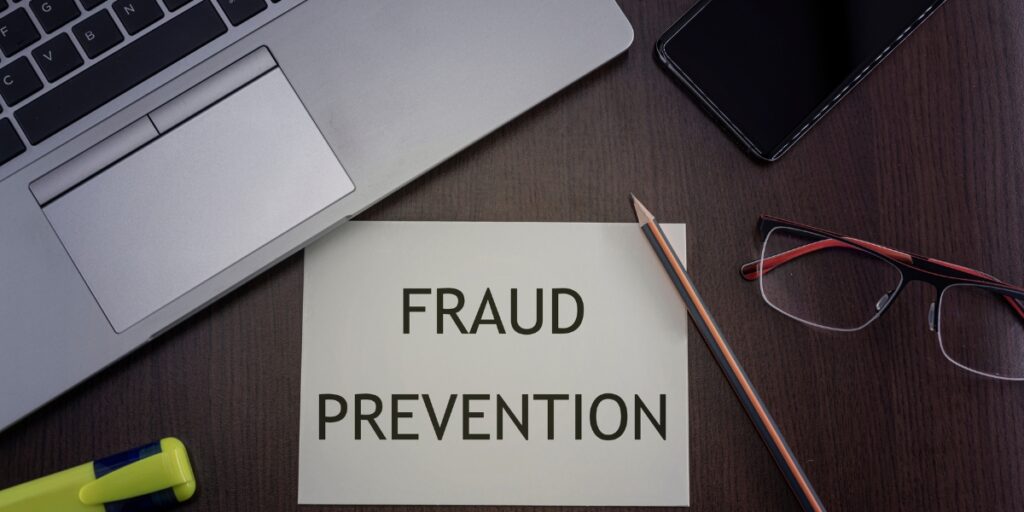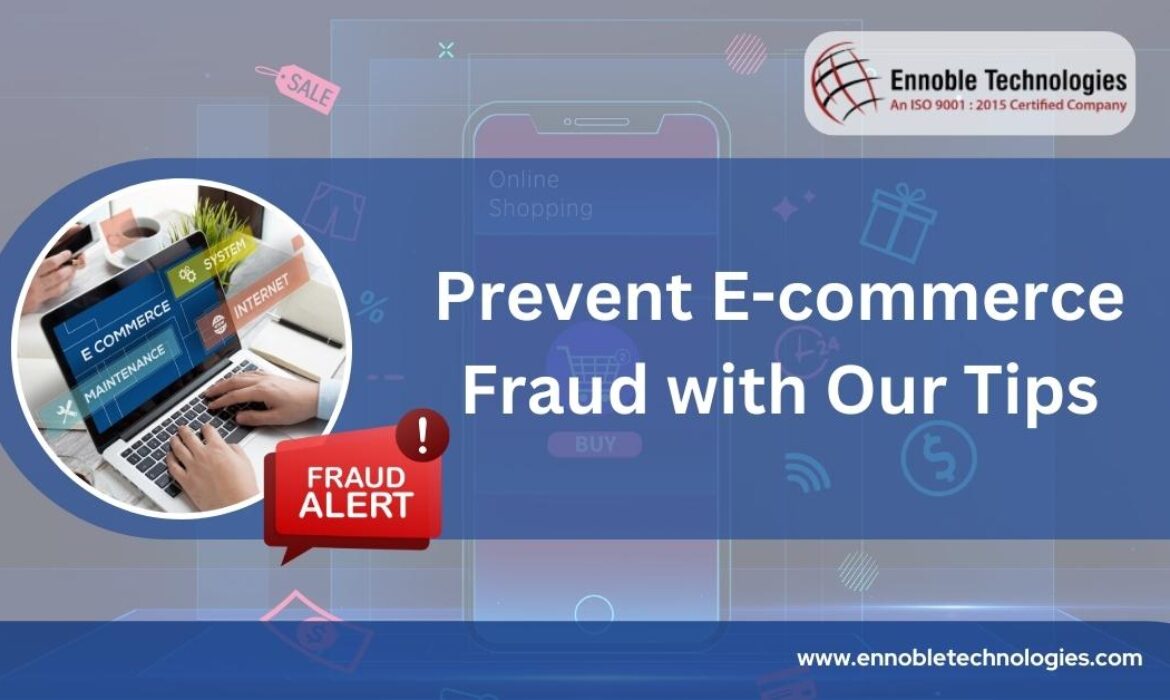In the age of digital advancement, E-commerce has become an integral part of our lives, providing us with the convenience of shopping from the comfort of our homes. However, this convenience comes with its own set of challenges, one of the most prominent being E-commerce fraud. As the E-commerce landscape continues to evolve, so do the tactics used by fraudsters to exploit unsuspecting consumers and businesses. In this article, we will delve into the world of E-commerce fraud and provide you with valuable tips to safeguard yourself and your business against these threats.
Understanding E-commerce Fraud:

E-commerce fraud refers to any deceptive or illegal activity carried out online with the intention of financially harming individuals or businesses. It can take various forms, such as credit card fraud, account takeovers, identity theft, and chargeback fraud. Fraudsters use sophisticated methods to exploit vulnerabilities in the E-commerce ecosystem, targeting both consumers and merchants. The financial losses incurred due to E-commerce fraud are substantial and can have far-reaching consequences.
Top Tips to Prevent E-commerce Fraud:

1. Implement Strong Authentication Measures: To protect your E-commerce platform, it’s essential to have robust authentication measures in place. This could include two-factor authentication (2FA), requiring customers to confirm their identity through a second channel like a mobile app or email. Similarly, merchants should have strong authentication protocols for accessing their accounts.
2. Regularly Update Security Software: Keeping your E-commerce website’s security software up to date is crucial. Regular updates often include patches for vulnerabilities that could be exploited by fraudsters. Additionally, consider using a firewall and encryption to secure customer data and transactions.
3. Educate Your Customers: A well-informed customer is less likely to fall victim to fraud. Provide educational resources on your website, such as tips on creating strong passwords, recognizing phishing emails, and understanding common E-commerce scams. Empower your customers to be vigilant online shoppers.
4. Monitor Transactions Closely: Implement real-time transaction monitoring to detect any suspicious activity. Unusual purchasing patterns, multiple transactions from different locations, or unusually large orders could be signs of fraud. Having automated systems in place to flag and investigate these transactions can help prevent losses.
5. Employ Machine Learning and AI: Machine learning and artificial intelligence can analyze vast amounts of data to detect patterns indicative of fraudulent activity. These technologies can help E-commerce platforms identify and prevent fraud in real time, adapting and improving their accuracy over time.
6. Use Address Verification System (AVS): AVS compares the billing address provided by the customer with the address on file with the credit card company. If they don’t match, it could indicate a fraudulent transaction. Implementing AVS can add an extra layer of security to your E-commerce transactions.
7. Implement a Review Process for High-Risk Orders: For orders that seem suspicious or high-risk, have a manual review process in place. This might involve contacting the customer to verify the order or requesting additional identification. It may add a slight delay to the process, but it can prevent fraudulent transactions.
8. Secure Payment Gateways: Choose a reputable and secure payment gateway for processing transactions. These gateways often have built-in fraud detection mechanisms and encryption to protect sensitive payment information.
9. Stay Informed About New Threats: E-commerce fraud tactics are constantly evolving. Stay updated on the latest fraud trends and techniques. Engage with industry forums, attend webinars, and follow security experts to stay ahead of potential threats.
10. Build Trust Through Transparency: Transparency builds trust with your customers. Clearly communicate your refund and return policies, terms of use, and privacy practices. This fosters customer confidence and reduces the likelihood of chargeback fraud.
Staying Ahead of Emerging Threats:

As the landscape of E-commerce fraud continues to evolve, so must your strategies to prevent it. Cybercriminals are constantly adapting and finding new ways to exploit vulnerabilities. Here are some additional measures to consider as you stay ahead of emerging threats:
1. Data Encryption: Ensure that all sensitive data, such as credit card information and personal details, are encrypted during transmission and storage. This makes it much harder for hackers to intercept and decipher the data.
2. Regular Audits and Assessments: Conduct regular security audits and assessments of your E-commerce platform. This can help you identify potential vulnerabilities and weaknesses in your security infrastructure that could be exploited by fraudsters.
3. Collaborate with Industry Partners: Stay connected with industry associations and partners to share information about emerging fraud trends. Collaborative efforts can help you gain insights into the latest threats and strategies to counter them.
4. Continuous Employee Training: Educate your staff about the latest E-commerce fraud tactics and prevention techniques. Employees who handle customer information, transactions, and security protocols should be well-informed and trained to recognize and respond to potential threats.
5. Implement Behavioral Analysis: Utilize behavioral analysis tools to detect anomalies in customer behavior. This technology can identify unusual patterns in user interactions and flag potentially fraudulent activities.
6. Geo-Blocking and IP Filtering: Implement geo-blocking and IP filtering to restrict access to your E-commerce platform from high-risk regions or known malicious IP addresses. This can significantly reduce the chances of unauthorized access.
7. Customer Verification Methods: Depending on the nature of your business, consider implementing customer verification methods such as photo identification uploads or voice recognition. This can add an extra layer of security, especially for high-value transactions.
8. Secure Third-party Integrations: If your E-commerce platform integrates with third-party services, ensure that these integrations are secure and regularly updated. Vulnerabilities in third-party components can be exploited to gain access to your system.
9. Communication Channels: Maintain clear and secure communication channels with your customers. Fraudsters often attempt to impersonate E-commerce businesses through emails, SMS, or social media. Educate your customers about how you will communicate with them and be cautious of any suspicious messages.
10. Legal and Regulatory Compliance: Stay compliant with relevant laws and regulations related to data protection and online transactions. Compliance not only helps protect your business but also builds trust among your customers.
Frequently Asked Questions

Q: What is e-commerce fraud?
A: E-commerce fraud refers to fraudulent activities conducted over the internet with the aim of stealing sensitive information or money.
Q: How can I recognize phishing scams?
A: Phishing scams often involve deceptive emails requesting sensitive information or containing suspicious links. Always verify the sender’s identity.
Q: What is multi-factor authentication (MFA)?
A: MFA is an authentication method that requires users to provide two or more verification factors to gain access to an account.
Q: How do I educate my customers about security?
A: Offer guidelines on creating strong passwords, recognizing phishing attempts, and staying vigilant online.
Q: What is real-time transaction monitoring?
A: Real-time transaction monitoring involves using tools to track transactions as they occur to identify any suspicious activity promptly.
Q: How does AI help in preventing e-commerce fraud?
A: AI can analyze transaction data and user behavior to detect anomalies and patterns associated with fraudulent activity.
Conclusion:
The battle against E-commerce fraud is an ongoing one, and the tips mentioned in this article serve as a foundation to create a secure environment for both E-commerce businesses and customers. By combining technological solutions, customer education, and vigilant monitoring, you can significantly reduce the risk of falling victim to fraudulent activities.
Remember, E-commerce fraud prevention is not a one-size-fits-all solution. Every business has its unique risks and challenges. Regularly reassess your security measures, stay informed about the latest threats, and be prepared to adapt your strategies accordingly. The effort you invest in preventing E-commerce fraud will not only safeguard your financial interests but also contribute to a safer and more trustworthy online shopping experience for everyone involved. By working together as a community, we can make E-commerce a more secure and resilient marketplace for the future.
Also Read: Maximize Your Reach with PPC Advertising – Ennoble Technologies
AI-driven e-commerce fraud prevention Card-not-present fraud prevention Cybersecurity for e-commerce E Commerce E-commerce fraud analytics E-commerce fraud detection E-commerce fraud investigation E-commerce fraud monitoring E-commerce fraud risk management E-commerce payment fraud Fraud mitigation strategies Fraudulent account creation prevention Fraudulent activity in digital commerce Fraudulent chargeback prevention Fraudulent order prevention Fraudulent return prevention Fraudulent transactions in e-commerce Identity theft protection in online shopping Multi-factor authentication for online shopping Online fraud prevention Phishing and scam prevention in e-commerce Preventing online payment fraud Real-time fraud prevention Secure customer data in online transactions Secure online transactions Transaction verification in e-commerce






